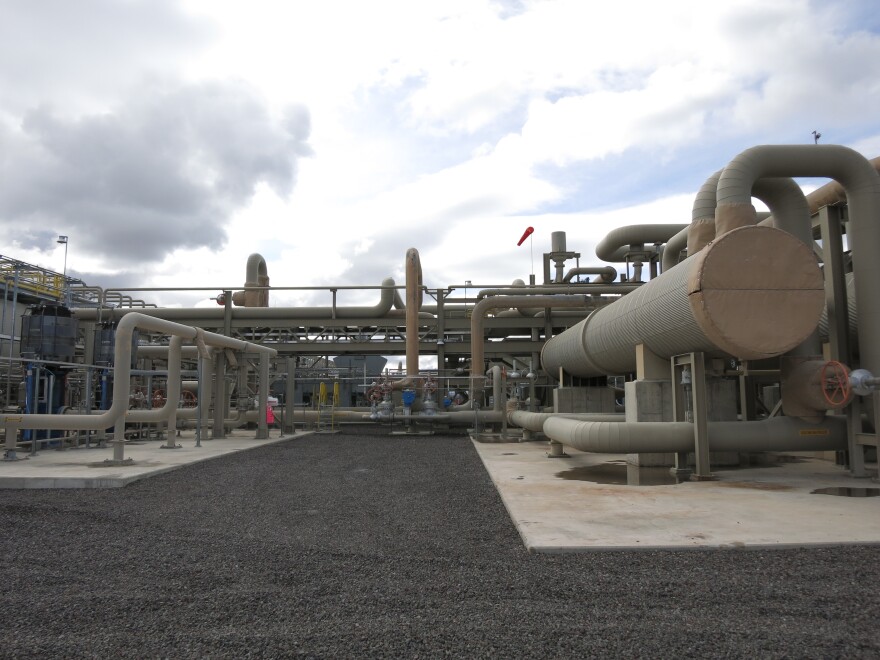A bill in the state legislature is pushing Nevada’s utility companies into providing half of their power from renewable sources of energy.
Opponents of the measure say it could increase costs to consumers who might foot the bill for new infrastructure. And NV Energy, the state’s largest utility provider, has offered amendments that could potentially limit the reach of the bill in their favor.
Supporters, like Dylan Sullivan, a senior scientist with the Natural Resources Defense Council, say it would reduce the state’s dependence on fossil fuels.
Reno Public Radio’s Noah Glick spoke with Sullivan about a new report from his organization about renewables in the Silver State.
KUNR: You’re the co-author of a report called “A Lot For a Little: Renewable Energy, Energy Efficiency A Good Investment For Nevada. Why are those good investments?
Sullivan: What this paper shows is that we can essentially double the state’s commitment to renewable energy and energy efficiency at very low cost.
The reason we would want to do that is because it reduces emissions, which helps us to address climate change, capital investment, which will help us create jobs, and by doing more renewable energy and energy efficiency we can lessen the state’s dependence on out-of-state fossil fuels, which is pretty high right now.
You mentioned costs briefly. Why should the average, everyday Nevadan care about where their power is coming from? Natural gas is currently at a pretty low price, so why should Nevadans care about this movement toward renewable energies?
So natural gas is very cheap right now, but natural gas has a history of being a very volatile fuel. And while natural gas is probably cleaner than coal from a greenhouse gases point of view, it’s still a fossil fuel and it still has impacts in its extraction. If we care about addressing climate change in the medium and long term, then we need to increasingly get our electricity from more renewable sources.
Nevada doesn’t really have fossil fuel resources, but they have so much sunshine and they have some of the nation’s best geothermal resources, so this is a way for Nevada to produce its electricity in Nevada. And Nevada has great transmission connections to its neighbors in California and there is a big export opportunity here.
You say in the report that Nevada’s energy policies need updating. What specifically are you referring to and what needs to be done?
I’m referring to one policy in particular, and that’s the renewable portfolio standard, the law that sets how much renewable energy utilities like NV Energy are required to get from renewable sources like solar or geothermal.
Assembly [Chris] Brooks’ bill, Assembly Bill 206, would increase that amount from the current 25 percent by 2025 standard, to a 50 percent by 2030 standard, with the goal of 80 percent by 2040. So that’s a lot of numbers I just threw out, but what that really means is the extra renewable energy by 2030 is the amount of renewable energy needed to power [500,000] Nevada homes a year.
Nevada’s renewable portfolio standard, I think was once one of the leading in the country, but it’s sort of fallen behind recently.
But what’s the business incentive for some of these utilities or grid operators to get in the game?
So the incentive really lies with companies that develop and sell to utilities renewable energy projects.
There are two ways to structure an incentive. This is sort of a minimum requirement. Then there’s the overarching federal policies that help make renewable energy really cheap right now, the solar and wind tax credits.
The report also dives a little bit into employment, and it says last year, solar jobs increased 25 percent and wind jobs 32 percent. So what kind of growth are we seeing here in Nevada, and how do we keep that momentum going?
Nevada was one of the few states where solar jobs actually declined last year. As part of this report, we didn’t directly look at the employment impact of going to 50 percent renewable energy by 2030.
But what we do have is some idea of the scale of investment that would be necessary to meet that target. And we think that it would lead to $3.3 billion of capital investment in the Nevada economy.
Dylan Sullivan is a senior scientist with the Natural Resources Defense Council. You can read the organization’s report that he co-authored below.
A Lot For A Little: Renewable Energy, Energy Efficiency A Good Investment For Nevada by KUNR Reno Public Radio on Scribd
Read Assembly Bill 206 below.
Assembly Bill 206 by KUNR Reno Public Radio on Scribd





